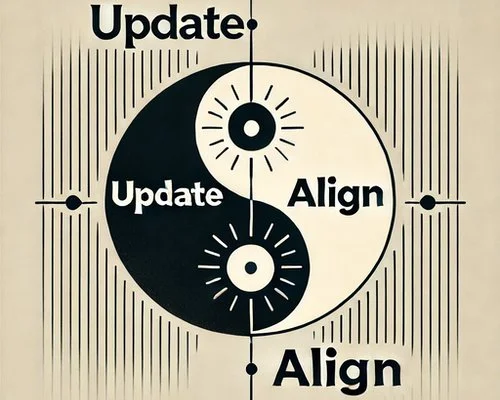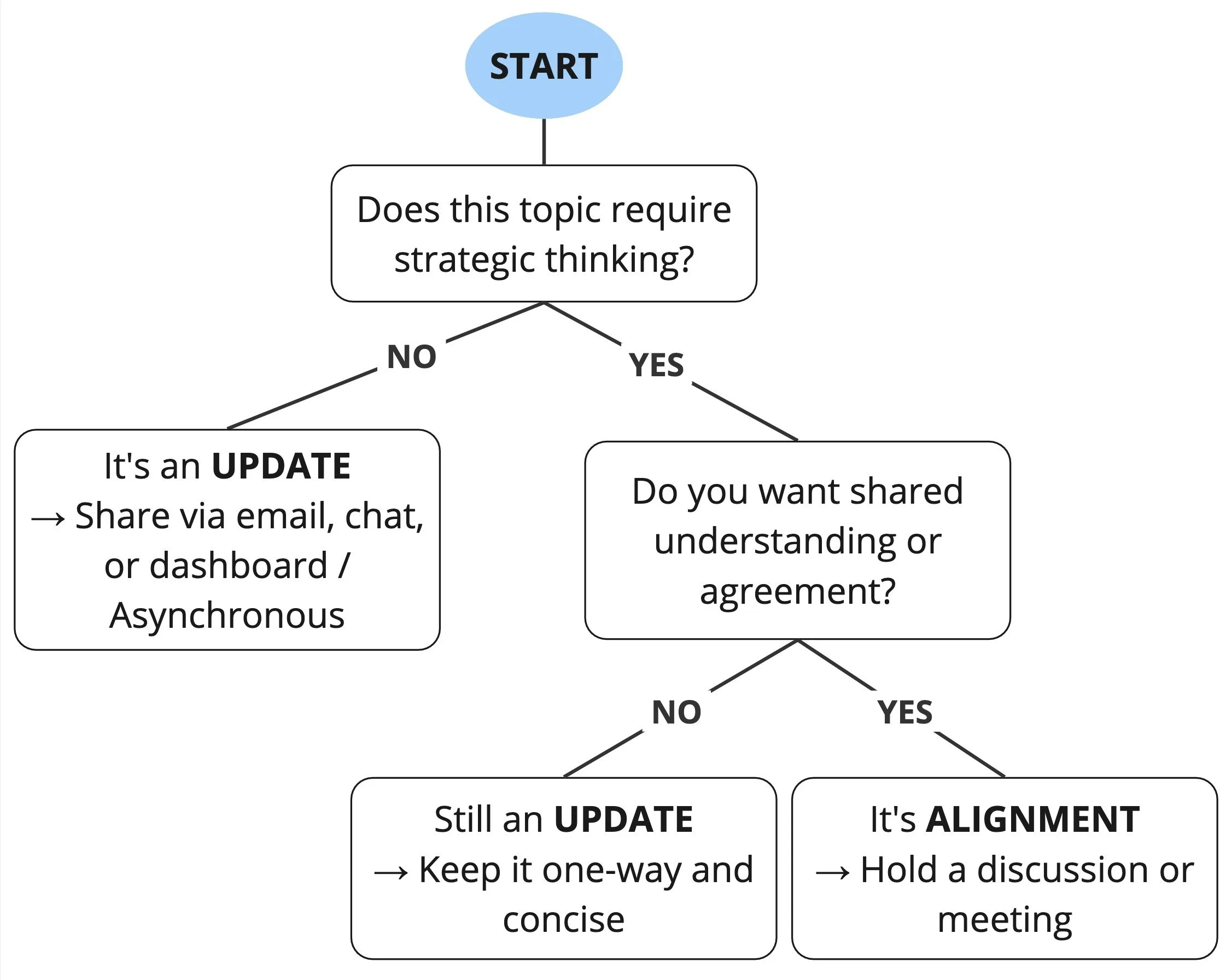Update" or "Alignment"? The Small Distinction That Changes Everything
How many times have you sat in a meeting and quietly wondered, “Why am I here?”
Maybe it was framed as an important alignment conversation… but turned out to be a simple status update. Or perhaps you scheduled what you thought was a quick update — only to find yourself pulled into a full-blown discussion about priorities and direction.
It’s a familiar pattern. And it reveals something deeper about the way we communicate in our organisations: we confuse intent with interaction.
We say "alignment" when we're really just sharing information. We send "updates" when we're actually seeking consensus. And in the blur between the two, we lose time, trust, and the opportunity to collaborate meaningfully.
It doesn’t have to be this way.
Update ≠ Alignment: Why This Matters More Than You Think
At first glance, these terms might seem interchangeable. But there’s a world of difference between them — a difference that can either enable clarity or quietly fuel confusion and disengagement.
Update is about transmission.
It’s one-way. A signal sent. No response required. It serves a clear purpose: to inform. No dialogue, no decisions, no action beyond understanding.
Think of it like a signpost: it tells you something has happened. You take note, adjust if needed, and move on.
"The Q3 report is finalised."
"The campaign files are in the shared folder."
"The bill’s been paid."
"Dinner’s ready!"
You don’t need to weigh in. You just need to know.
Alignment is about connection.
It’s two-way. It invites dialogue. It seeks shared understanding. It requires people to show up with perspective, curiosity, and a willingness to contribute.
Alignment says: “Let’s get on the same page before we move forward.”
"What’s our shared approach to this launch?"
"Are we agreed on our priorities for this quarter?"
"How will we respond to this shift in direction?"
"What do we want for dinner?"
This is where collaboration lives. It’s not just about knowing — it’s about co-creating clarity.
Why Getting the Language Right Changes the Conversation
When we misuse these words, we confuse expectations.
People show up to meetings unsure if they’re meant to listen or contribute. They leave wondering what their role was. Time gets eaten. Energy drains. And slowly, a culture of ambiguity takes root.
But when we’re intentional about how we frame our communication — when we say clearly “This is an update” or “We’re here to align” — we unlock something powerful:
People prepare better
Meetings become more focused
Contributions become more intentional
Collective ownership deepens
It’s not just semantics. It’s a signal of respect — for people’s time, for their agency, and for the purpose of the work itself.
Facilitating with Purpose: The Hidden Power in Language
In a world increasingly flooded with meetings, messages, and notifications, the smallest acts of clarity are revolutionary.
As facilitators, leaders, and team members, we have a responsibility — and an opportunity — to create space for value-adding dialogue, not just information noise.
If it’s an update, send an email, post it on work socials.
If it’s alignment, invite people into the conversation.
If you’re not sure… pause and ask yourself: What’s really needed here — attention or engagement?
Because when we get this right, we don’t just improve meetings.
We enable better collaboration, more effective decision-making, and ultimately, more human ways of working together.
What would change if your team mastered this distinction?
What if every communication carried the clarity of intention it deserved?
What if people could trust that their time and voice mattered — and know exactly when they were needed?
Start small. Be intentional with your language. And invite others to do the same.
Because the future of impactful work isn’t just about what we do — it’s about how we show up for each other in conversation.
If you’re new here, I’m Kubair Shirazee, and I help people, teams, organisations and communities navigate past the status quo and explore better ways of collaborating and delivering impact.










